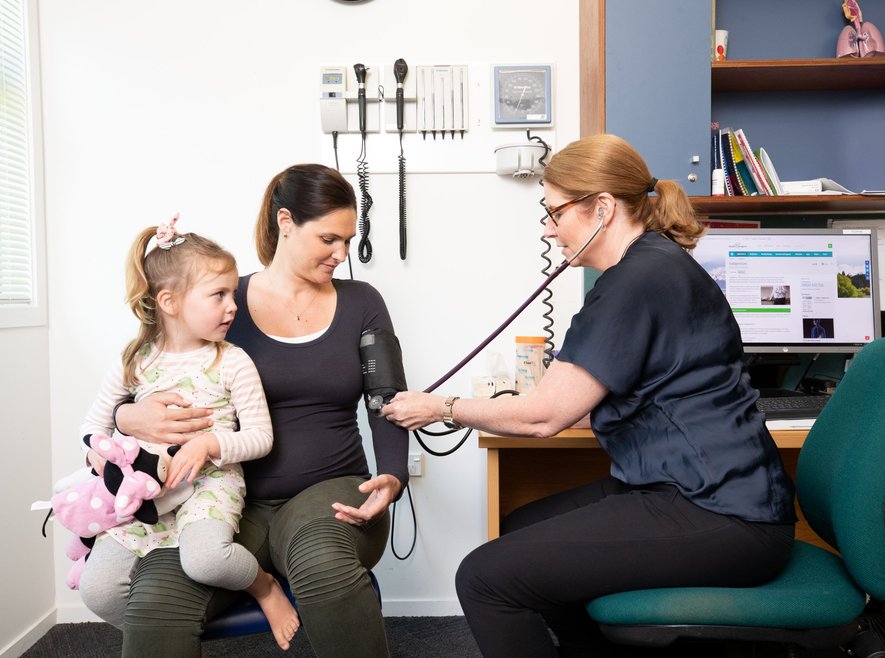9.3 Medicines reconciliation
Medicine reconciliation is about obtaining the most accurate list possible of patient medicines, allergies and adverse drug reactions (ADRs).
Accurate and timely medicine reconciliation helps ensure the right patients receive the right medications in the right dose at the right time. Reconciling medications reduces the risk of medication errors and confusion that may occur during patient transfer of care.
| Standard - what we'll be assessing on | Evidence to provide for assessment |
|---|---|
|
9.3 The practice undertakes medicines reconciliation in a timely manner. |
|
Communication between health professionals is key to the medicine reconciliation process and will significantly reduce medication errors caused by incomplete or insufficient documentation and will also reduce errors that could otherwise cause harm to the patient.
The Health Quality and Safety Commission (HQSC) have produced the Medicine Reconciliation Standard which has been endorsed as the Standard for the New Zealand health and disability sector by the Health Information Standards Organisation (HISO), a committee that reports to the National Health IT Board.
The Standard applies to any person or organisation that provides medicine reconciliation within the New Zealand health and disability sector. It applies to both the paper and electronic medicine reconciliation process.
New Zealand Legislation
The following legislation relates to medicines reconciliation
- Health Practitioners Competence Assurance Act 2003
- Medicine Act 1981
- Medicines Regulation 2005
- Health and Disability Services (Safety) Act 2001
- Privacy Act 2020
- Health (Retention of Health Information) Regulations 1996
Summary of the HQSC Medicine Reconciliation Standard
1. Accountabilities and Responsibilities
- All registered healthcare practitioners involved in medicine reconciliation are responsible and accountable for the accuracy and quality of information provided to support the medicine reconciliation process at a given point in time.
- Each organisation ensures each healthcare practitioner involved in the medicine reconciliation process is able to undertake their role and responsibilities competently
2. Medicine Reconciliation Processes
- Collect: The healthcare practitioner collects the most accurate list of medicines, allergies, and adverse drug reactions (ADRs) using a minimum of two source types.
- Compare: The healthcare practitioner compares the collected medicines, allergies and ADR list against the prescribed information, such as the medication lists, identifying and documenting any discrepancies.
- Communicate: At each transfer point, all changes that have occurred to the patient’s medicines, allergies and ADR lists will be documented, dated, and communicated by the healthcare practitioners involved to ensure the care of the patient is continued
3. Documentation
- Any information associated with medicine reconciliation is complete, accurate, relevant and current. The responsibility for this remains with the healthcare practitioners involved.
- Measuring, Evaluation and Reporting
- Measuring and evaluation: Medicine reconciliation auditing and evaluation should be done at least annually using a continuous quality improvement cycle, for example, Plan – Do – Study – Act (PDSA) cycle.
- Reporting: Those responsible for reporting within the practice should be identified and their role defined in the reporting process. This can be included in the practice’s medicines reconciliation policy and procedure.

The PDSA cycle can:
- identify areas where improvements can be achieved using auditing.
- show that improvement is being achieved and sustained
Things to evaluate and consider:
- How well are changes being implemented, for example, are timeline targets being met within practice agreed timeframes?
- What is the impact - are you achieving improvement and reducing discrepancies?
This process must continue at regular intervals with results and learnings contributing to ongoing team support and training and these are reported back to the clinical governance group.
Medicines’ Reconciliation Policy
The practice’s Medicines’ Reconciliation Policy must include:
- Accountability and responsibilities of team members, who is responsible for which part of the medicines reconciliation process.
- Practice agreed timelines for reconciling medicines within 7 working days.
- Education and training of new practitioners and locums should include training/information on how medicines reconciliation occurs in the practice, for example, collect, compare and communication as well as understanding and following the practices medicines reconciliation policy and procedure.
- Method for how and when auditing is done, including which tools are used for data collection, for example, data collection sheets or electronic tools. NB: See RNZCGP audit sheet and process in resources below.
- Frequency of auditing; for patient safety, a minimum of annual auditing is recommended. A performance or system issue may initiate a quality improvement intervention (PDSA) which should be followed by another audit to check effectiveness.
- Measuring and evaluation, that is, how and when the data is collated and presented to the clinical governance group.
- Reporting:, who is responsible for reporting and to whom. For example, the nurse lead or practice manager may report to the clinical governance group.
- How the practice addresses areas for quality improvement, for example, using the PDSA cycle.
NB: Your practice policies/procedures, need to adhere to the general structure suggested here and include document control measures.
Clinical record reviews (optional)
Practice's may wish to utilise the clinical record review self-audit checklist to ensure that clinicians are documenting and managing patient records correctly.
Patient records
Recording prescribing information electronically provides accurate, readily accessible data for continuity of patient care and an audit trail of activity.
Clear and accurate patient records contain all relevant clinical findings, decisions made, information given to the patient, and the medicines and any other treatment prescribed.
The patient record needs to include adequate patient medication history, including:
- Current medical conditions
- Any previous adverse reactions
- Concurrent or recent use of medicines (including non-prescription, complementary and alternative medicines)
-
Medicines reconciliation process and audit MARCH 2025
-
RNZCGP: Medicines reconciliation and auditing (Power Point slides)
-
Health Quality & Safety Commission New Zealand Medicine Reconciliation Standards
-
RNZCGP: Clinical record review self-audit checklist (Adobe Acrobat Reader recommended)
-
RNZCGP: Nurses Clinical record review self-audit checklist (Adobe Acrobat Reader recommended)
-
National events policy 2023